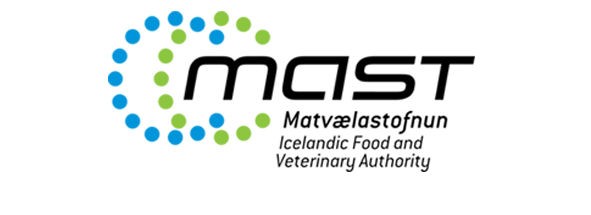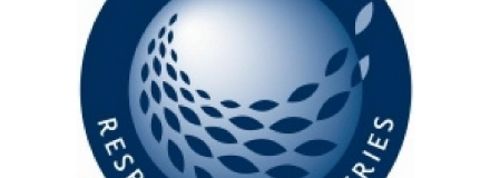Biodiversity in hot springs in high-temperature areas in Iceland. Overall summary prepared for the Framework Program. Final report
Research was carried out on the ecosystem in hot springs in five high-temperature areas in Iceland under the framework of the Framework Program in the years 2004-2009. The aim was to answer questions about the extent and nature of the variability in microbial flora between high-temperature areas in Iceland, which were studied mainly in terms of diversity and rare groups. This report summarizes the results obtained from the above studies. The areas that were examined were the Hengill area, Torfajökull area, Krafla / Námafjall, Krísuvík and Vonarskarð. Furthermore, the results of a similar study carried out for the environmental assessment of the geothermal areas at Þeistareykir and Gjástykki were included in this summary. A total of 115 samples were taken in the six areas and a species composition in 80 of them was analyzed. Species-identifying bacterial and archaeal bacteria in the DNA from the samples were amplified and sequenced. The sequences were classified by affinity and classified by species or genus by comparison with comparable sequences in Genbank. A total of 4424 bacterial sequences and 1006 ancient bacterial sequences were detected from the samples. The distribution of bacteria and ancient bacteria in the samples was examined and it was found that 16 bacterial assemblages were found in most areas and species of the Aquificae array were most common, as they are often primary producers in hot springs. Species of the β- and γ-proteobacterial and Deinococcus-Thermus factions were also found to a significant extent in all areas except Krísuvík. In addition, several other factions were found in individual areas. Within the ancient bacteria, Crenarcheota species were found in all areas, Euryarchaeota species were found in Vonarskarð and Þeistareykir, Thaumarchaeota was found in Vonarskarð and in Krafla / Námafjall and Nanoarchaeota in the Torfajökull area. Calculations of biodiversity (H) microorganisms in the six areas showed that the Krafla area was the most diverse, then Torfajökull, then Vonarskarð, Þeistareykir, Hengill and finally Krísuvík. The assessment of biodiversity by calculating the collection curves largely supported this conclusion. Biological specificity was assessed on the basis of rare species by ≤96% corresponding to close relatives in Genbank. A total of 74 rare species or genera were found in the samples and they seemed for the most part regional and it is not unlikely that some of them are endemic. Most new species or genera were found in the Torfajökull area. Vonarskarð, Krafla / Námafjall and Þeistareykir had slightly fewer rare species or genera. New tribes were also found in the Hengill area, but not to the same extent as in the former.
Culture independent methods were used to study the microbial composition of hot springs in five geothermal areas in Iceland in 2004-2009. The aim was to answer questions on the degree of biodiversity and to what extend the species found were unique to the sites investigated. In this report the site specific research results were combined and compared. The geothermal sites investigated were the Hengill area, the Torfajökull area, the Krafla / Námafjall area, Krísuvík and Vonarskarð. Results from a similar research from an environmental assessment of the geothermal areas of Þeistareykir and Gjástykki were also used. A total of 115 samples were collected from the six geothermal areas and the microbial species composition was estimated in 80 of them. The 16S rRNA genes were amplified from DNA from the samples and partially sequenced. The obtained sequences were classified and identified to the species or genus level by comparison to similar sequences in Genbank. The total of 4424 bacterial sequences and 1006 archaeal sequences were analyzed. The distribution of bacterial and archaeal phyla of the samples was investigated and revealed that 16 bacterial phyla were represented in all areas. Also, that the phylum of the primary producers of hot springs - Aquificae - was dominating. Species belonging to β‐ and γ ‐ proteobacteraa and Deinococcus - Thermus were also found in considerable amounts in all areas except Krísuvík. Several bacterial phyla were only found at one or two geothermal areas. Species belonging to Crenarchaeota were found in all six areas, Euryarchaeota were found in Vonarskarð and Þeistareykir, Thaumarchaeota was found in Vonarskarð as well as in the Krafla / Námafjall area and Nanoarchaeota in the Torfajökull area. Calculation of the biodiversity index (H) of microbial species of the six geothermal areas revealed that the index for the Krafla / Námafjall area was highest, then Torfajökull, Vonarskarð, Þeistareykir, Hengill and finally Krísuvík. The estimate of biodiversity based on Rarefaction curves confirmed the results. The estimation of uniqueness of the areas was based on the number of novel species found using ≤96% similarity to closest relative in Genbank as the cutoff value. The total of 74 novel species or genera were found in the samples most of which were only found in one or at most two areas. Most of these were from the Torfajökull area. A considerable number of novel species were also found in Vonarskarð, Námafjall and Þeistareykir. Novel species or genera were also found in the Hengill geothermal area.












